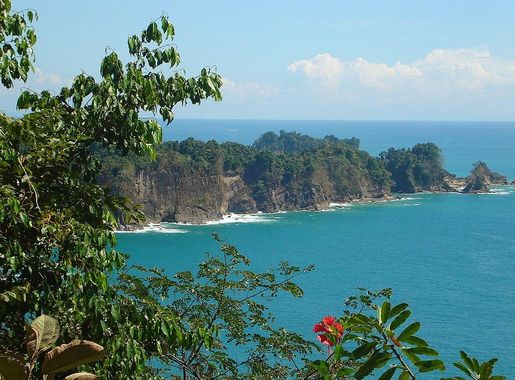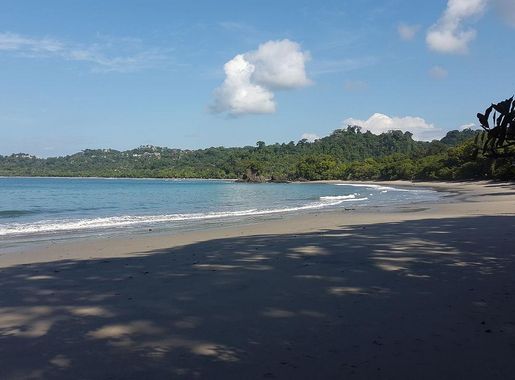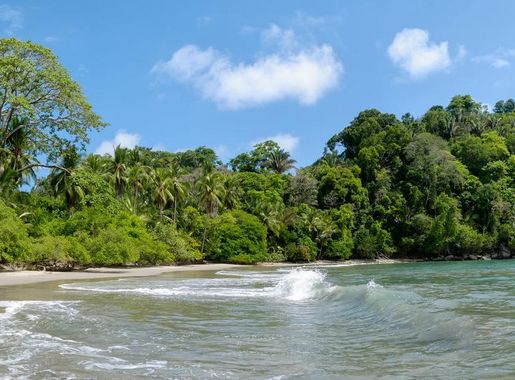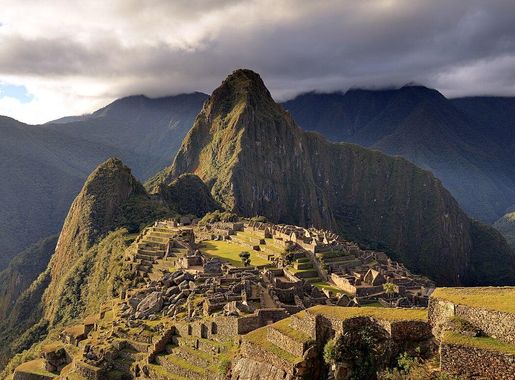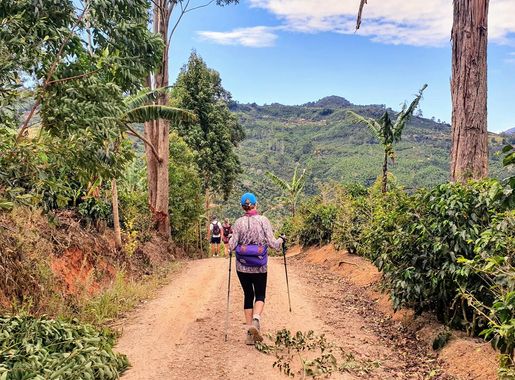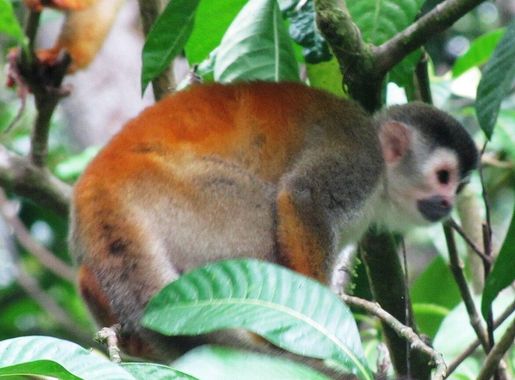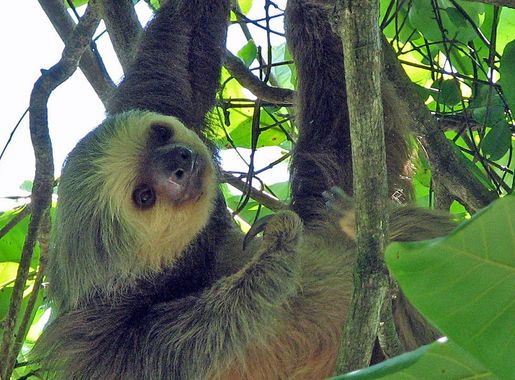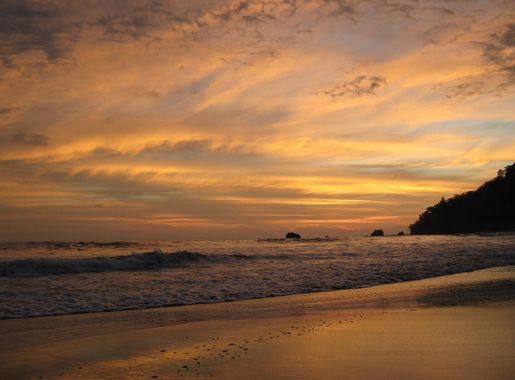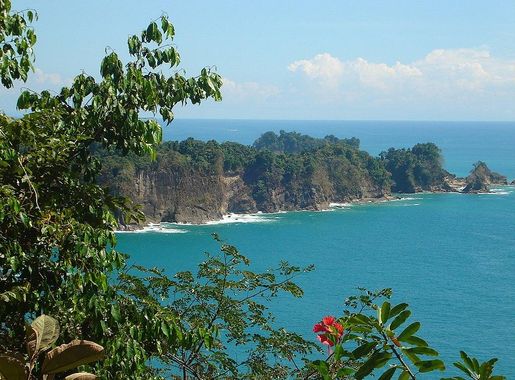
Manuel Antonio National Park: Costa Rica's Tropical Gem
Explore Manuel Antonio National Park: Where Lush Rainforests Meet Pristine Beaches and Diverse Wildlife in Costa Rica
Manuel Antonio National Park is one of Costa Rica's most cherished natural wonders. Located on the Pacific coast, this park is a haven for wildlife enthusiasts and beach lovers alike. With its pristine beaches, lush rainforests, and diverse wildlife, the park offers an unforgettable experience for visitors of all ages. The park is renowned for its rich biodiversity. Visitors can spot a variety of animals, including howler monkeys, sloths, and a plethora of bird species. The park's trails are well-maintained, making it easy to explore the dense jungle and discover hidden waterfalls and scenic viewpoints. Manuel Antonio also boasts some of the most beautiful beaches in Costa Rica. White sandy shores meet crystal-clear waters, perfect for swimming, snorkeling, or simply relaxing. Playa Manuel Antonio and Playa Espadilla are two of the most popular beaches within the park, offering stunning views and a tranquil atmosphere. Whether you're an adventure seeker or someone looking to unwind, Manuel Antonio National Park has something to offer. From guided tours to solo explorations, the park provides a unique blend of natural beauty and outdoor activities that will leave you with lasting memories.
Local tips in Manuel Antonio National Park
- Visit early in the morning to avoid crowds and see more wildlife.
- Wear comfortable hiking shoes and bring plenty of water.
- Don't forget your camera; the park is full of photo opportunities.
- Bring insect repellent to protect against mosquitoes.
- Hire a local guide for a more informative and enriching experience.
- Check the tide schedule if you plan to swim at the beaches.
Manuel Antonio National Park: Costa Rica's Tropical Gem
Manuel Antonio National Park is one of Costa Rica's most cherished natural wonders. Located on the Pacific coast, this park is a haven for wildlife enthusiasts and beach lovers alike. With its pristine beaches, lush rainforests, and diverse wildlife, the park offers an unforgettable experience for visitors of all ages. The park is renowned for its rich biodiversity. Visitors can spot a variety of animals, including howler monkeys, sloths, and a plethora of bird species. The park's trails are well-maintained, making it easy to explore the dense jungle and discover hidden waterfalls and scenic viewpoints. Manuel Antonio also boasts some of the most beautiful beaches in Costa Rica. White sandy shores meet crystal-clear waters, perfect for swimming, snorkeling, or simply relaxing. Playa Manuel Antonio and Playa Espadilla are two of the most popular beaches within the park, offering stunning views and a tranquil atmosphere. Whether you're an adventure seeker or someone looking to unwind, Manuel Antonio National Park has something to offer. From guided tours to solo explorations, the park provides a unique blend of natural beauty and outdoor activities that will leave you with lasting memories.
When is the best time to go to Manuel Antonio National Park?
Iconic landmarks you can’t miss
Parque Nacional Manuel Antonio
Discover the captivating beauty of Manuel Antonio National Park, where lush rainforests meet stunning beaches and wildlife thrives in a tropical paradise.
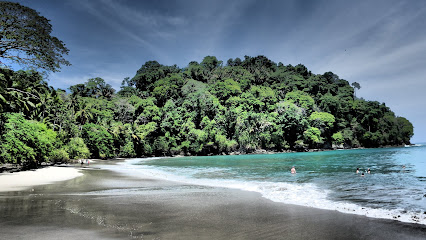
Manuel Antonio
Experience the breathtaking beauty and rich biodiversity of Manuel Antonio, a must-visit destination on Costa Rica's Pacific coast.
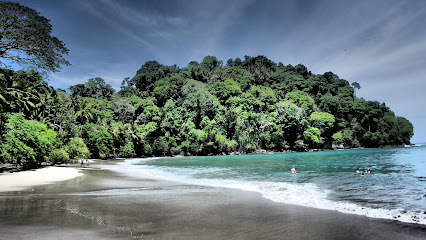
Manuel Antonio Beach
Explore the stunning Manuel Antonio Beach in Costa Rica, where pristine sands meet vibrant wildlife and breathtaking scenery for an unforgettable tropical getaway.

Playa Biesanz
Experience the tranquil beauty of Playa Biesanz, a hidden gem in Quepos, Costa Rica, perfect for relaxation, water activities, and breathtaking sunsets.
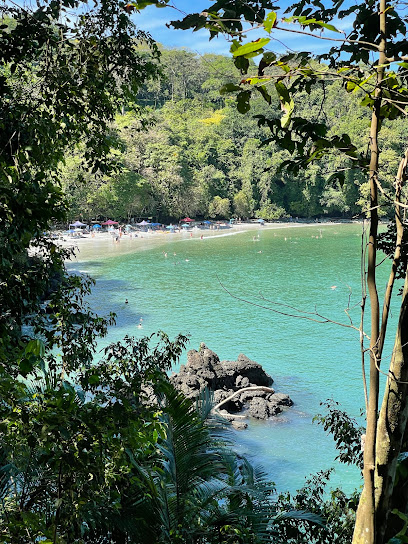
Si Como No Resort, Spa & Wildlife Refuge
Discover the perfect blend of luxury, nature, and adventure at Si Como No Resort, Spa & Wildlife Refuge in Quepos, Costa Rica.

Parque Nahomi
Explore the natural beauty and tranquility of Parque Nahomi, an urban oasis in Quepos, Costa Rica, perfect for relaxation and wildlife watching.
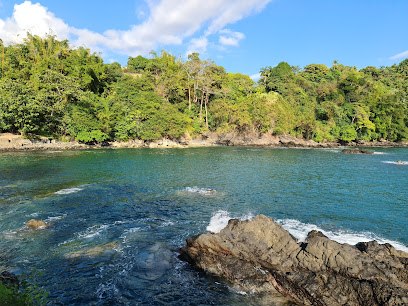
Espadilla Beach
Discover the stunning Espadilla Beach in Quepos, a perfect blend of sun, surf, and vibrant local culture in the heart of Costa Rica's Pacific coast.
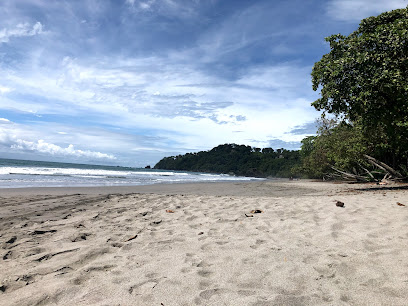
Playa Las Gemelas
Experience the natural beauty and tranquility of Playa Las Gemelas, a hidden gem on Costa Rica's Pacific coast, perfect for relaxation and adventure.
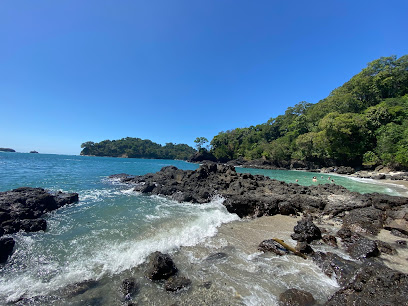
El Santuario Canopy Adventure Tour
Experience the thrill of zip-lining through the lush canopies of Manuel Antonio at El Santuario Canopy Adventure, where adventure meets nature.
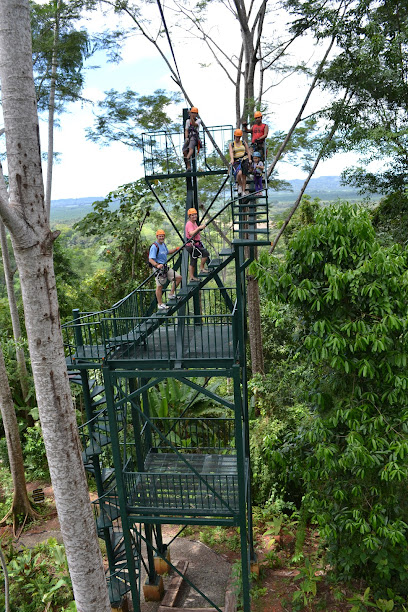
Chocolate Tour Manuel Antonio
Discover the delightful world of chocolate at the Chocolate Tour Manuel Antonio, where flavor meets tradition in the heart of Costa Rica's lush landscapes.

Manuel's Tours. Costa Rica.
Discover the breathtaking landscapes and incredible wildlife of Costa Rica with Manuel's Tours, your gateway to unforgettable adventures in Quepos.
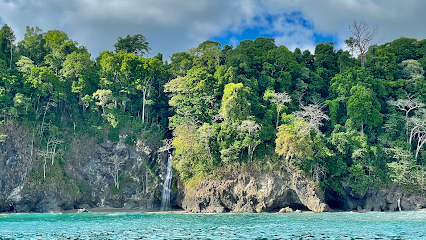
Espadilla South Beach
Experience the stunning beauty and vibrant atmosphere of Espadilla South Beach, a premier destination in Quepos, Costa Rica, for sun and surf.
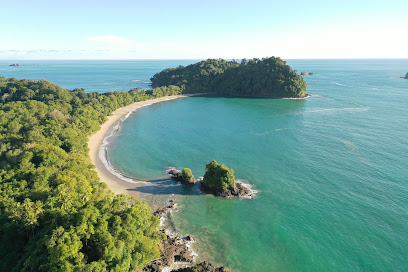
Playa Playitas (Manuel Antonio) - Playitas Beach
Explore the enchanting beauty of Playa Playitas, a serene beach in Costa Rica perfect for relaxation, adventure, and stunning sunsets.
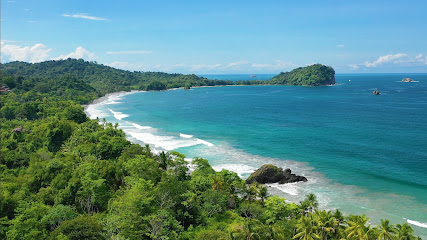
Sukia Park and ZIP LINE Tours
Discover the thrill of zip lining and the beauty of wildlife at Sukia Park, a must-visit adventure park in Manuel Antonio, Costa Rica.
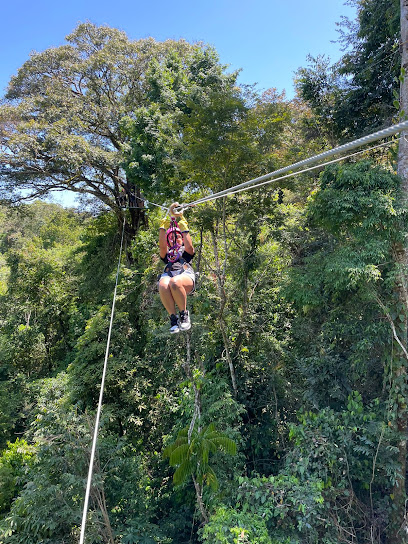
Manuel Antonio Experiences
Discover the beauty of Costa Rica's Manuel Antonio with thrilling boat tours, kayaking adventures, and scenic sightseeing experiences.
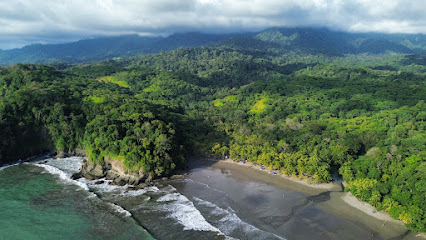
Unmissable attractions to see
Manuel Antonio
Experience the breathtaking beauty and diverse wildlife of Manuel Antonio, a premier Costa Rican destination for nature lovers and adventure seekers.

Rainmaker
Explore the breathtaking beauty of Rainmaker in Costa Rica, a paradise of suspension bridges, lush trails, and rich biodiversity for nature lovers.

Parque Nacional Chirripó
Discover the breathtaking landscapes and rich biodiversity of Parque Nacional Chirripó, Costa Rica's highest national park, perfect for adventure and nature lovers.
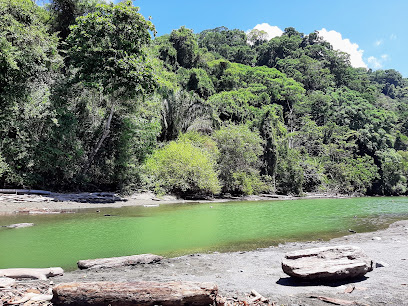
Jungle Crocodile Safari & Bird Watching Tour
Experience the thrill of wildlife up close at Jungle Crocodile Safari & Bird Watching Tour in Costa Rica's stunning Puntarenas Province.
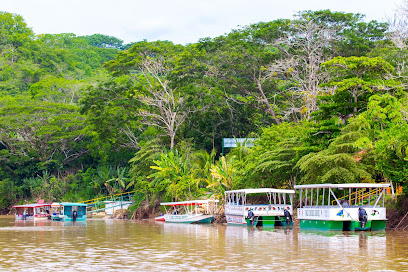
Cervecería, Bar y Restaurante Chirripóberg
Experience the authentic flavors of Costa Rica at Cervecería, Bar y Restaurante Chirripóberg, where craft beer meets local cuisine in a vibrant atmosphere.
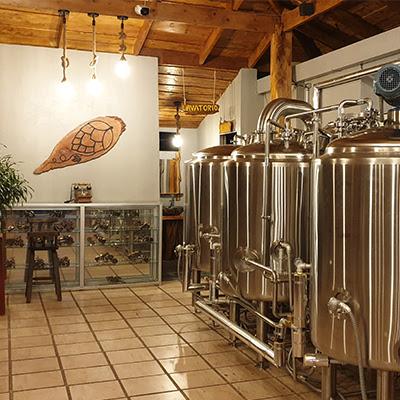
Playa Las Gemelas
Experience the tranquil beauty of Playa Las Gemelas, a hidden gem in Costa Rica's Puntarenas Province, perfect for relaxation and adventure.
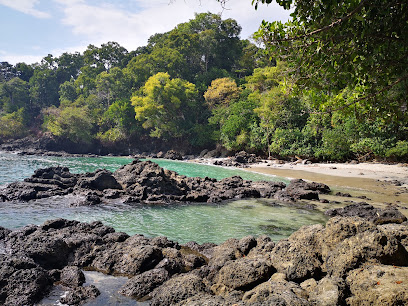
Skydive Costa Rica
Unleash your adventurous spirit with breathtaking skydiving experiences over stunning Costa Rican landscapes at Skydive Costa Rica.
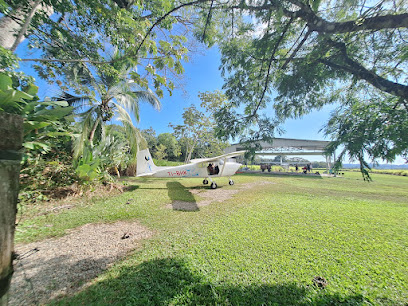
Zip Coaster
Soar through the lush rainforest of Quepos on the thrilling Zip Coaster, an adventure that combines speed with stunning natural beauty in Costa Rica.
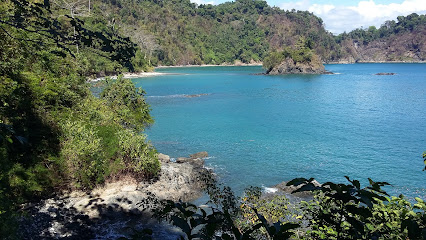
Dave & Dave's Costa Rica Nature Park
Explore the breathtaking beauty and rich biodiversity of Costa Rica at Dave & Dave's Nature Park in Heredia Province.
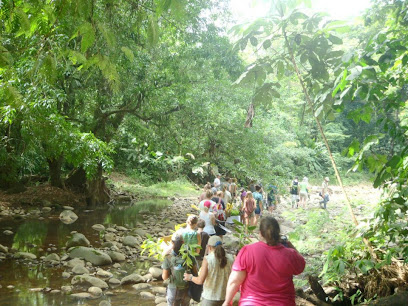
Café Don Emilio.
Experience the essence of Costa Rican culture at Café Don Emilio, where rich coffee and serene landscapes come together in San Isidro de El General.
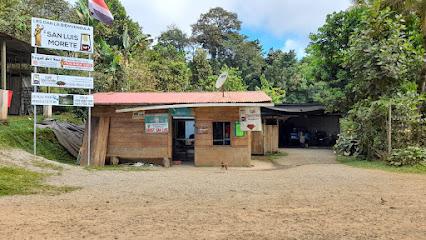
Sukia Park and ZIP LINE Tours
Embark on a thrilling adventure at Sukia Park and ZIP LINE Tours, where wildlife encounters and breathtaking zipline experiences await in the heart of Costa Rica.
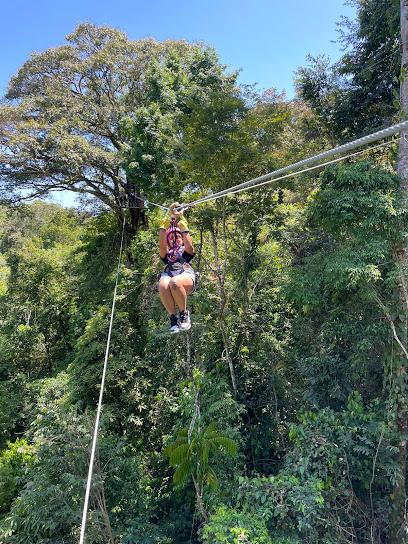
Playa Playitas (Manuel Antonio) - Playitas Beach
Experience the beauty and tranquility of Playa Playitas, a stunning beach destination in Manuel Antonio, Costa Rica, perfect for relaxation and adventure.
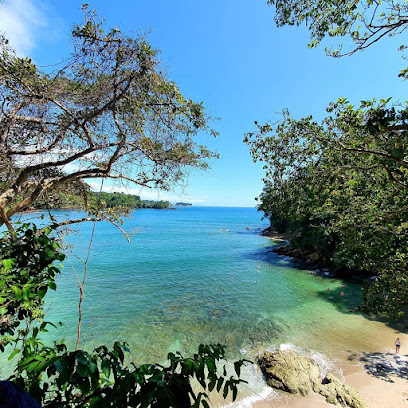
Jungle Night Tour Manuel Antonio
Experience the wonders of Costa Rica's rainforest at night with Jungle Night Tour Manuel Antonio, where wildlife and nature come alive after dark.
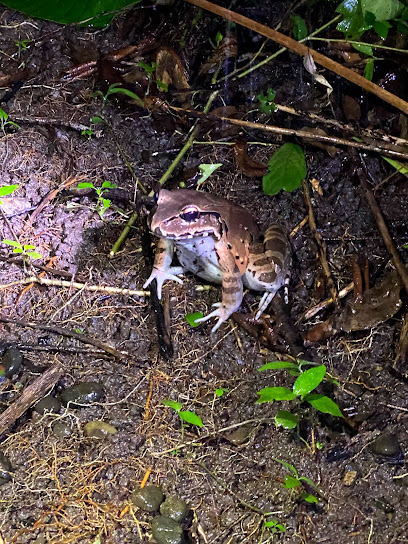
Playitas Beach
Experience the tranquil beauty of Playitas Beach in Puntarenas, Costa Rica, where golden sands and serene waters await your visit.
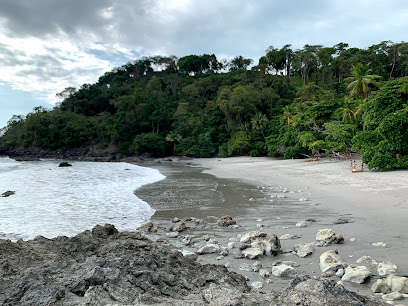
Baby Sea Turtle Release
Join the unforgettable Baby Sea Turtle Release in Quepos, where conservation meets adventure on the stunning Costa Rican coast.

Essential places to dine
Manuel Antonio Falafel Bar
Discover delightful falafel dishes at Manuel Antonio Falafel Bar – a must-visit dining destination in beautiful Costa Rica.
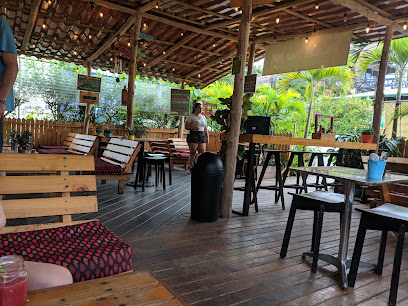
El Patio de Café Milagro
Discover the heart of Costa Rican cuisine at El Patio de Café Milagro in Quepos - a vibrant restaurant and coffee shop offering authentic flavors.
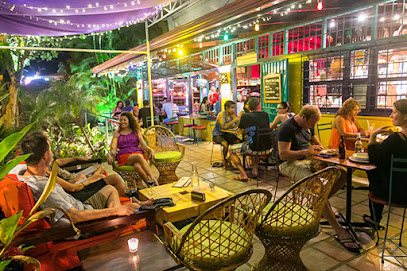
Agua Azul
Experience exquisite Costa Rican cuisine at Agua Azul in Quepos, where every dish tells a story and every meal is memorable.
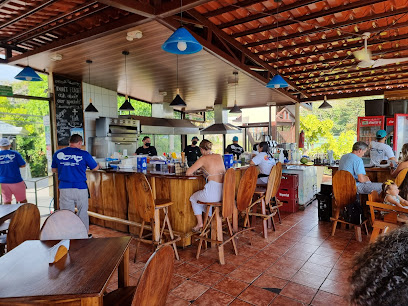
Restaurante Ronny's Place
Savor authentic Costa Rican flavors at Restaurante Ronny's Place in Quepos - a culinary delight surrounded by nature.
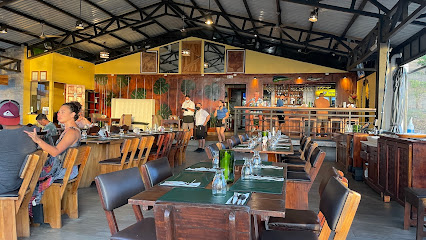
Hola Indian Restaurant Manuel Antonio
Discover the exquisite flavors of India at Hola Indian Restaurant Manuel Antonio – where culinary artistry meets warm hospitality.

Soda El Angel
Discover authentic Costa Rican flavors at Soda El Angel in Quepos - a must-visit eatery for every traveler.
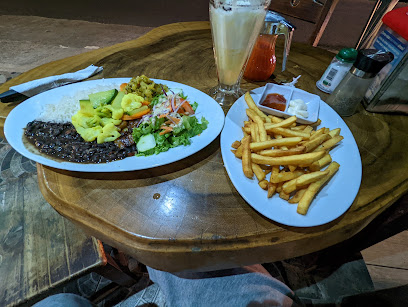
Restaurante Buru Seaside Manuel Antonio
Experience exquisite seafood and vibrant live music at Restaurante Buru Seaside in Manuel Antonio – where coastal charm meets culinary delight.

Baldi's Fresh Restaurant
Experience vibrant flavors at Baldi's Fresh Restaurant in Quepos - where fresh ingredients meet exceptional dining in Costa Rica.
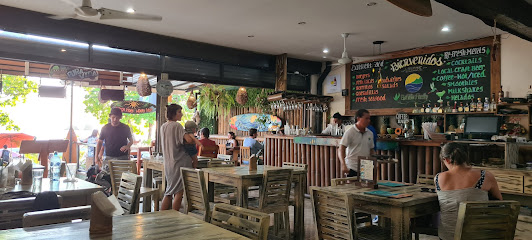
De La Finca
Experience the authentic flavors of Costa Rica at De La Finca in Quepos - where local ingredients meet culinary creativity.
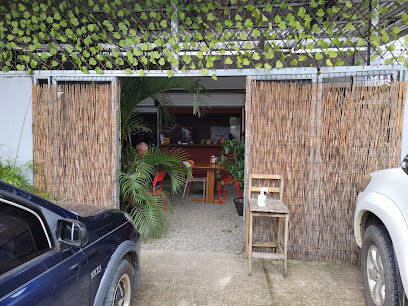
La Luna Restaurant
Experience the best of Costa Rican cuisine at La Luna Restaurant in Quepos – where breathtaking views meet exquisite flavors.
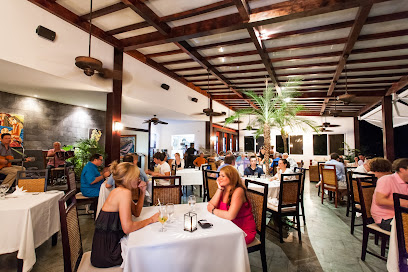
Le Papillon Restaurante
Discover exquisite dining at Le Papillon Restaurante in Quepos, where fresh local ingredients meet exceptional culinary artistry.
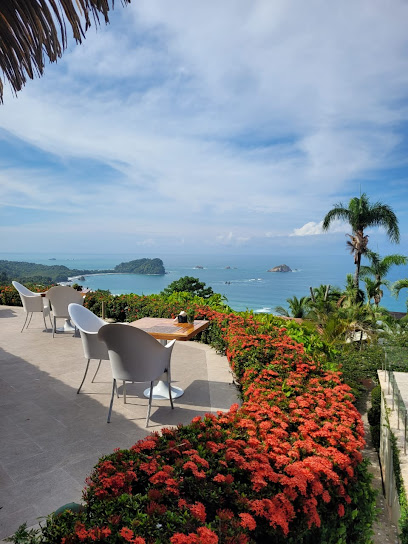
Restaurante Donde Alex
Experience authentic Costa Rican flavors with breathtaking coastal views at Restaurante Donde Alex in Quepos.

Bar & Restaurant El Chante del Parque
Experience authentic Costa Rican cuisine at Bar & Restaurant El Chante del Parque in Quepos - where local flavors meet warm hospitality.

Medusa Restaurant
Discover Medusa Restaurant: A vibrant culinary haven in Quepos serving exquisite Costa Rican and Peruvian dishes amidst stunning tropical scenery.
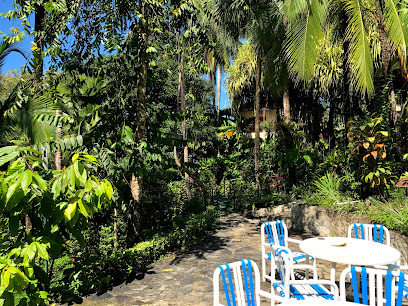
Victoria's Gourmet Italian Restaurant
Experience the essence of Italy with every bite at Victoria's Gourmet Italian Restaurant in Quepos, Costa Rica.
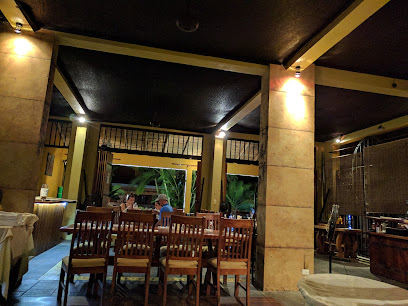
Markets, malls and hidden boutiques
Mini Price Store
Explore the convenience of Mini Price Store in Quepos, where local flavors meet everyday essentials for all travelers.
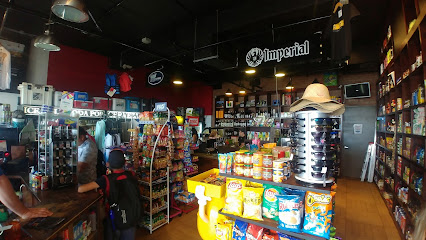
Super Iguana
Explore the vibrant Super Iguana grocery store in Quepos, where fresh produce and local flavors await every traveler!
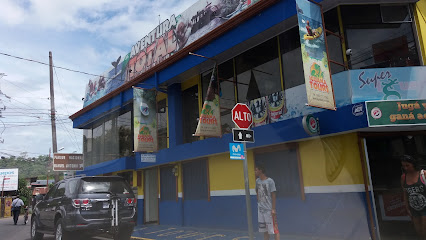
Luna Llena Collectiv Art Cafe Boutique
Experience the perfect blend of local art and delicious cuisine at Luna Llena Collectiv Art Cafe Boutique in Manuel Antonio, Costa Rica.
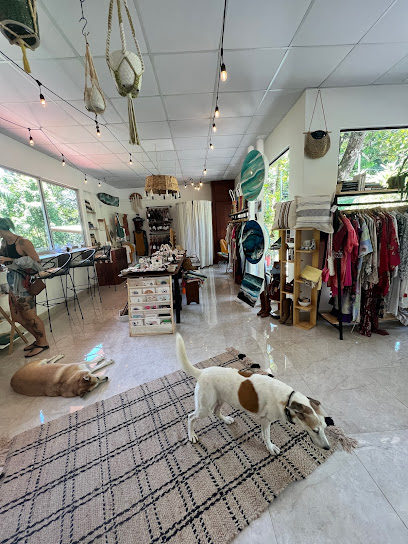
Modern Primitive Living
Explore Modern Primitive Living in Quepos - A unique gift shop showcasing Costa Rican art, jewelry, furniture, and home goods perfect for souvenirs.

ALTAIR SOUVENIR & COFFEE BEAN SHOP
Explore the vibrant culture of Costa Rica at ALTAR SOUVENIR & COFFEE BEAN SHOP, where unique handicrafts and artisanal coffee come together.
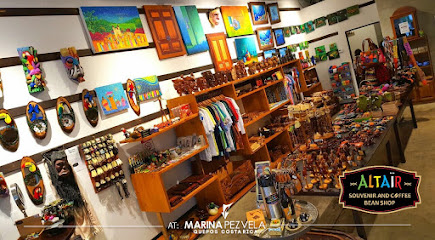
Supermarket Pura Vida
Explore Supermarket Pura Vida in Manuel Antonio for fresh local produce, international snacks, and a taste of Costa Rican culture.
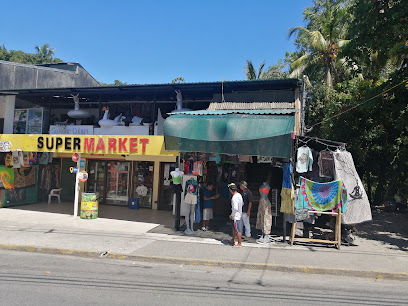
Quepos Cigar Shop
Explore the rich flavors of premium cigars at Quepos Cigar Shop, a must-visit location for enthusiasts and tourists in Costa Rica.
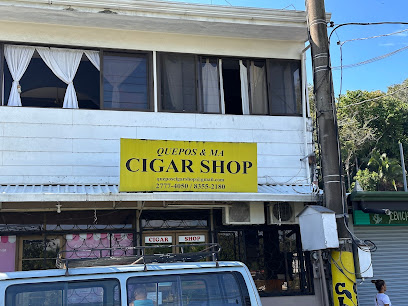
Mariposita Gift Shop & Gallery
Explore the vibrant artistry of Costa Rica at Mariposita Gift Shop & Gallery, where every piece tells a story of local craftsmanship.
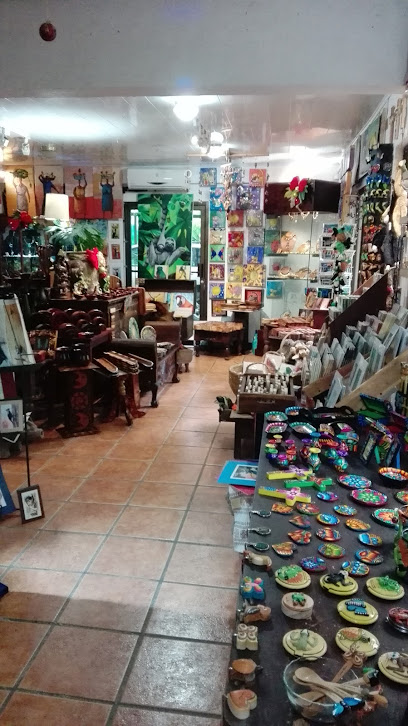
Sloth Souvenir
Discover unique sloth-themed clothing and handicrafts at Sloth Souvenir in Manuel Antonio, Costa Rica - perfect souvenirs from your tropical adventure.
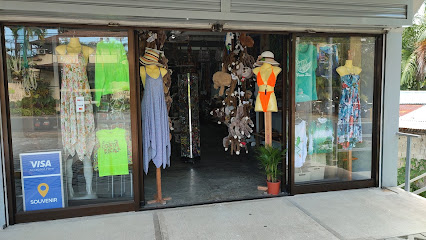
ALTAIR CAFE & SOUVENIR - MANUEL ANTONIO
Explore unique souvenirs and local flavors at ALTAR CAFE & SOUVENIR in Manuel Antonio, a vibrant hub of culture and creativity.
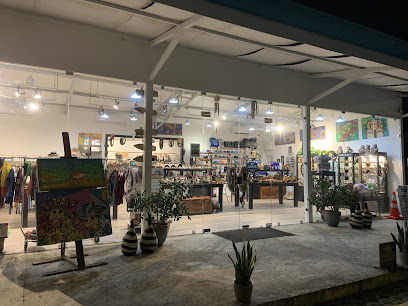
Gelateria El Parque
Discover the refreshing taste of Gelateria El Parque, where delicious ice creams meet the stunning backdrop of Parque Nacional Manuel Antonio.
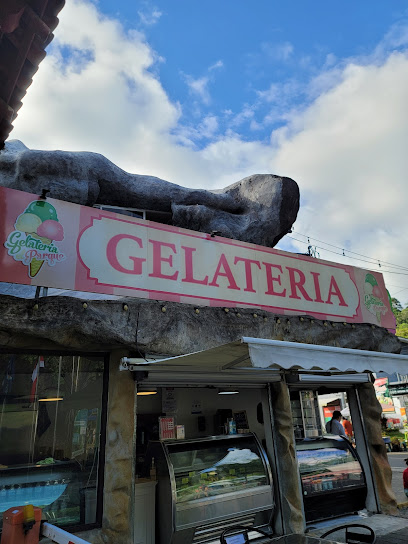
Pelagic Gear - Costa Rica
Discover Pelagic Gear in Quepos, Costa Rica - your destination for high-quality fishing apparel and the spirit of adventure.
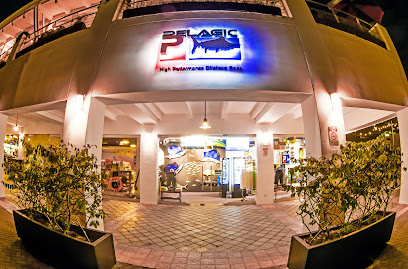
Jungle Avenue
Jungle Avenue: Your boutique destination in Quepos for unique clothing and exquisite local jewelry, reflecting Costa Rica's vibrant culture.
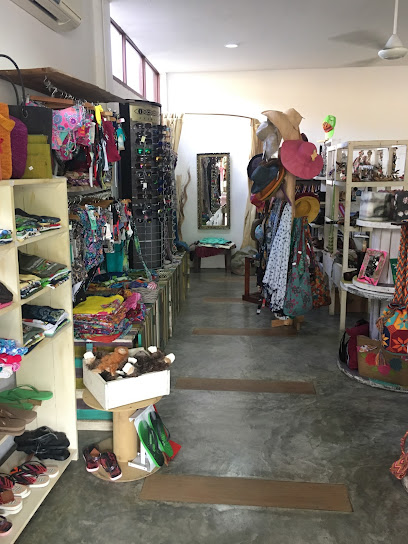
Bam Bam Boo
Explore Bam Bam Boo in Quepos for a vibrant selection of clothing and accessories that embody the tropical spirit of Costa Rica.
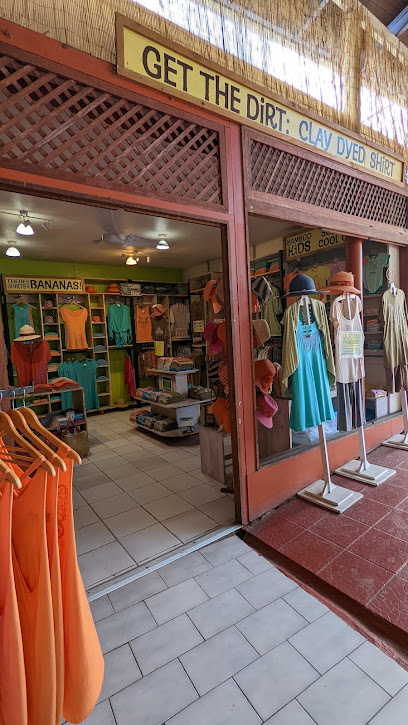
Indigo by Jungle Sol
Discover unique women's fashion and local crafts at Indigo by Jungle Sol, a boutique gem in Quepos, Costa Rica, perfect for every traveler.
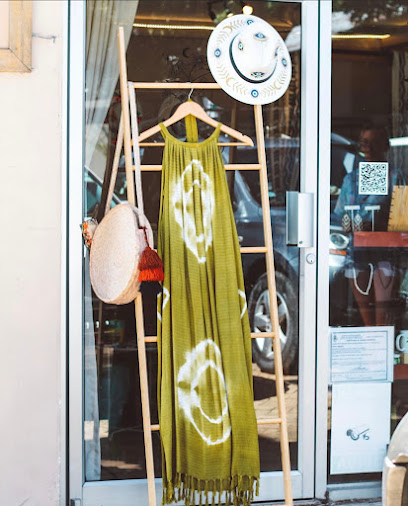
Essential bars & hidden hideouts
Manuel Antonio Falafel Bar
Indulge in authentic Mediterranean flavors at Manuel Antonio Falafel Bar, a must-visit restaurant for tourists exploring Costa Rica's vibrant culinary scene.
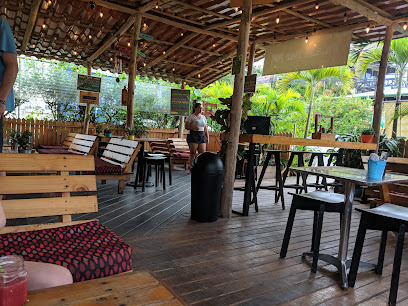
El Patio de Café Milagro
Experience the heart of Costa Rican culture at El Patio de Café Milagro, where culinary delights and local treasures await every visitor.
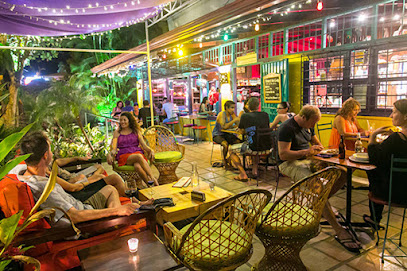
Soda El Angel
Discover the heart of Costa Rican cuisine at Soda El Angel in Quepos, where authentic flavors and warm hospitality await every visitor.
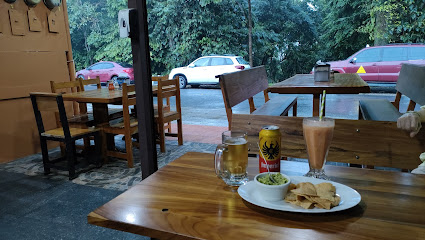
Restaurante Buru Seaside Manuel Antonio
Experience the vibrant flavors of Costa Rica at Restaurante Buru, where fresh seafood meets live music and breathtaking views.

YOLO Social
Discover the vibrant dining scene at YOLO Social, a popular restaurant in Quepos offering delicious food and a lively atmosphere for tourists.
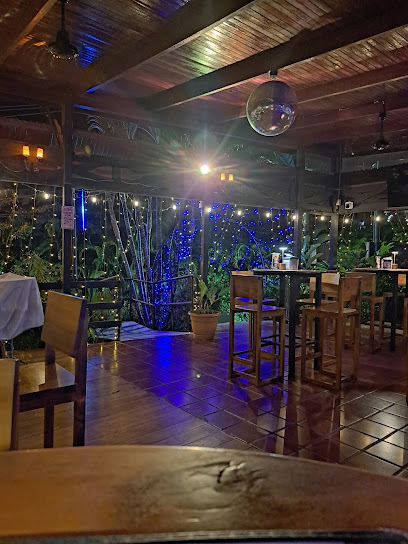
Bar & Restaurant El Chante del Parque
Experience the vibrant flavors of Costa Rica at Bar & Restaurant El Chante del Parque in Quepos, a must-visit culinary destination.
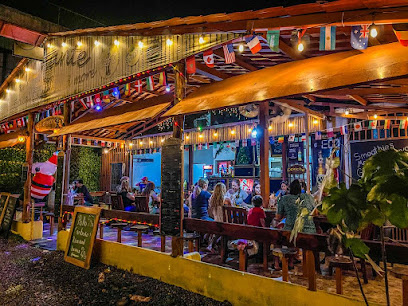
Morpho Beach Bar
Discover the vibrant atmosphere of Morpho Beach Bar in Manuel Antonio, where delicious cuisine meets breathtaking coastal views.
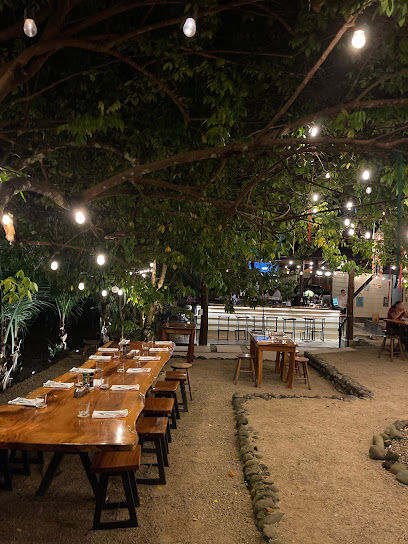
Ape Eclectic Social Bar
Experience the vibrant nightlife of Quepos at Ape Eclectic Social Bar, where eclectic decor meets delicious cocktails and lively entertainment.
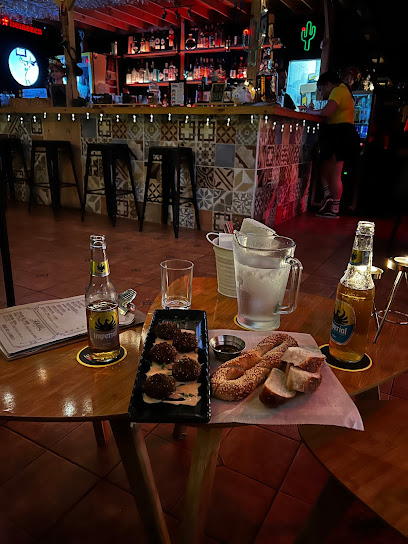
Bar Y Restaurante Relax
Experience the vibrant flavors of Costa Rica at Bar Y Restaurante Relax, a must-visit restaurant in Quepos offering delightful local cuisine and a lively atmosphere.
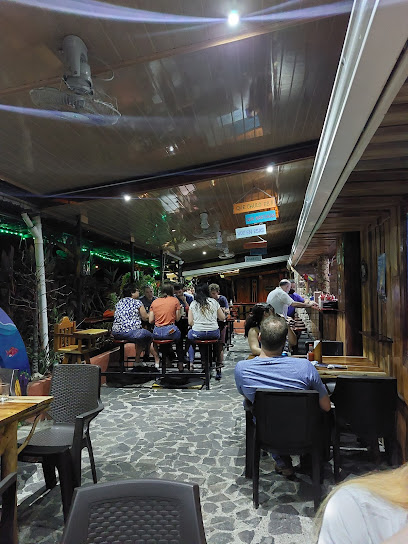
Double Hook Sports Bar
Experience the best of Quepos at Double Hook Sports Bar, where sports, food, and fun come together in a vibrant atmosphere.
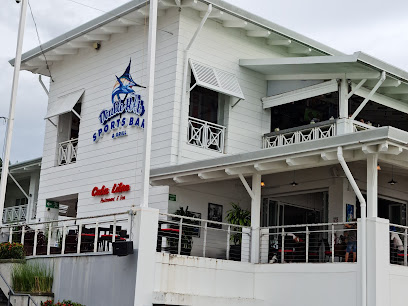
Bar las gemelas
Discover the flavors of Costa Rica at Bar las Gemelas, a picturesque restaurant in Manuel Antonio National Park, perfect for nature lovers and food enthusiasts.
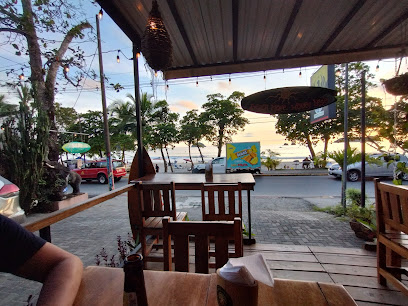
Tule Cafe Restaurante
Discover the family-friendly Tule Cafe Restaurante in Quepos, where delicious local and international cuisine meets stunning views and warm hospitality.
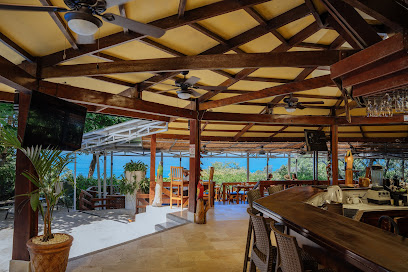
Karolas Restaurant
Savor exquisite local cuisine and breathtaking ocean views at Karolas Restaurant in Manuel Antonio, a true culinary gem of Costa Rica.
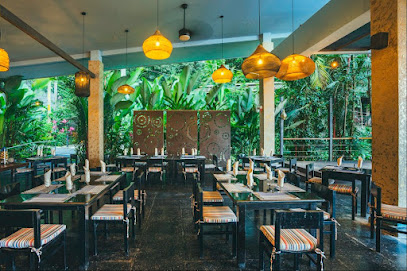
Cocos
Discover the vibrant atmosphere of Cocos, the perfect bar in Quepos for exquisite cocktails and a taste of Costa Rican culture.
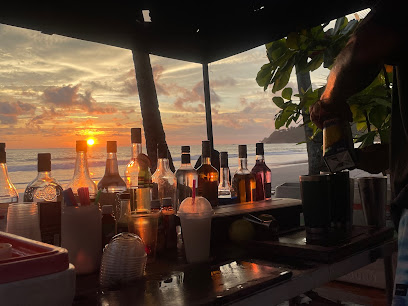
Drunken Monkey
Discover the vibrant nightlife at Drunken Monkey in Quepos, where eclectic drinks meet a lively atmosphere for an unforgettable experience.
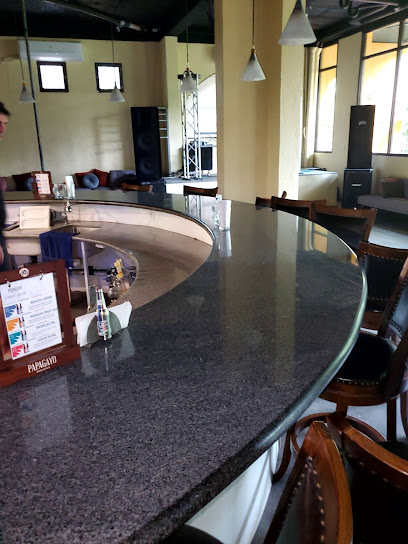
Local Phrases about Manuel Antonio National Park
-
- HelloHola
[oh-lah] - GoodbyeAdiós
[ah-dee-ohs] - YesSí
[see] - NoNo
[noh] - Please/You're welcomePor favor/De nada
[por fah-vohr/deh nah-dah] - Thank youGracias
[grah-see-ahs] - Excuse me/SorryDisculpe/Lo siento
[dees-kool-peh/loh see-ehn-toh] - How are you?¿Cómo estás?
[koh-moh ehs-tahs] - Fine. And you?Bien. ¿Y tú?
[byen. ee too] - Do you speak English?¿Hablas inglés?
[ah-blahs een-glehs] - I don't understandNo entiendo
[noh ehn-tee-ehn-doh]
- HelloHola
-
- I'd like to see the menu, pleaseMe gustaría ver el menú, por favor
[meh goos-tah-ree-ah vehr ehl meh-noo, por fah-vohr] - I don't eat meatNo como carne
[noh koh-moh kahr-neh] - Cheers!¡Salud!
[sah-lood] - I would like to pay, pleaseMe gustaría pagar, por favor
[meh goos-tah-ree-ah pah-gahr, por fah-vohr]
- I'd like to see the menu, pleaseMe gustaría ver el menú, por favor
-
- Help!¡Ayuda!
[ah-yoo-dah] - Go away!¡Vete!
[veh-teh] - Call the Police!¡Llama a la policía!
[yah-mah ah lah poh-lee-see-ah] - Call a doctor!¡Llama a un doctor!
[yah-mah ah oon dohk-tohr] - I'm lostEstoy perdido
[ehs-toy pehr-dee-doh] - I'm illEstoy enfermo
[ehs-toy ehn-fehr-moh]
- Help!¡Ayuda!
-
- I'd like to buy...Me gustaría comprar...
[meh goos-tah-ree-ah kohm-prahr...] - I'm just lookingSolo estoy mirando
[soh-loh ehs-toy mee-rahn-doh] - How much is it?¿Cuánto cuesta?
[kwan-toh kwehs-tah] - That's too expensiveEso es demasiado caro
[eh-soh ehs deh-mah-see-ah-doh kahr-oh] - Can you lower the price?¿Puedes bajar el precio?
[pweh-dehs bah-hahr ehl pree-seh-oh]
- I'd like to buy...Me gustaría comprar...
-
- What time is it?¿Qué hora es?
[keh oh-rah ehs] - It's one o'clockEs la una
[ehs lah oo-nah] - Half past (10)Las diez y media
[lahs dyehs ee-ehs ee meh-dee-ah] - MorningMañana
[mah-nyah-nah] - AfternoonTarde
[tahr-deh] - EveningNoche
[noh-cheh] - YesterdayAyer
[ah-yehr] - TodayHoy
[oy] - TomorrowMañana
[mah-nyah-nah] - 1Uno
[oo-noh] - 2Dos
[dohs] - 3Tres
[trehs] - 4Cuatro
[kwah-troh] - 5Cinco
[seeng-koh] - 6Seis
[seys] - 7Siete
[syeh-teh] - 8Ocho
[oh-cho] - 9Nueve
[nweh-veh] - 10Diez
[dyehs]
- What time is it?¿Qué hora es?
-
- Where's a/the...?¿Dónde está...?
[dohn-deh ehs-tah] - What's the address?¿Cuál es la dirección?
[kwal ehs lah dee-rehk-syon] - Can you show me (on the map)?¿Puedes mostrarme (en el mapa)?
[pweh-dehs mohs-trar-meh (ehn ehl mah-pah)] - When's the next (bus)?¿Cuándo es el próximo (autobús)?
[kwan-doh ehs ehl proh-ksee-moh (ow-toh-boos)] - A ticket (to ....)Un boleto (a ....)
[oon boh-leh-toh (ah)]
- Where's a/the...?¿Dónde está...?
History of Manuel Antonio National Park
-
Long before the arrival of European explorers, the region now known as Manuel Antonio National Park was inhabited by indigenous groups such as the Quepoa. These tribes were part of the larger pre-Columbian culture that flourished in Costa Rica. They lived off the land through fishing, hunting, and small-scale agriculture, utilizing the abundant natural resources of the coastal and forested areas.
-
The Spanish arrived in Costa Rica in the early 16th century, led by explorers such as Juan Ponce de León and Hernán Ponce de León. These expeditions marked the beginning of Spanish colonization, which dramatically altered the lives of the indigenous inhabitants. The Quepoa and other local tribes faced significant challenges, including disease, forced labor, and cultural assimilation.
-
During the 17th century, the coastal areas of Costa Rica, including the region around Manuel Antonio, became a hotspot for pirate activity. Pirates, such as the infamous Henry Morgan, used the secluded coves and beaches as hideouts and launching points for raids on Spanish ships and settlements. This period added a layer of intrigue and adventure to the region's history.
-
In the early 20th century, the town of Quepos was established near what is now Manuel Antonio National Park. Originally a small fishing village, Quepos grew rapidly due to the banana industry. The United Fruit Company established large banana plantations in the area, bringing economic development along with significant environmental changes.
-
Manuel Antonio National Park was officially established on November 15, 1972. This move was part of a broader effort by the Costa Rican government to preserve the country's rich biodiversity and natural landscapes. The creation of the park protected the unique ecosystems of both land and sea, ensuring the conservation of numerous plant and animal species.
-
Since its establishment, Manuel Antonio National Park has become one of Costa Rica's most popular tourist destinations. The park's stunning beaches, lush rainforests, and diverse wildlife attract visitors from around the world. This influx of tourism has played a crucial role in the local economy, promoting sustainable practices and raising awareness about the importance of conservation.
Manuel Antonio National Park Essentials
-
Manuel Antonio National Park is located on the Pacific coast of Costa Rica, near the town of Quepos. The nearest major airport is Juan Santamaría International Airport (SJO) in San José, approximately 160 kilometers away. From San José, you can either rent a car, take a shuttle bus, or use public transport to reach the park. The drive typically takes about 2.5 to 3 hours. There are also domestic flights available from San José to Quepos, which take about 30 minutes.
-
Once you arrive in Quepos, getting to Manuel Antonio National Park is straightforward. Local buses run frequently between Quepos and the park entrance, taking about 15 minutes. Taxis and ride-sharing services are also readily available. Renting a car is a convenient option if you plan to explore the surrounding areas. Within the park, walking is the best way to explore its trails and beaches.
-
The official currency in Costa Rica is the Costa Rican Colón (CRC). US dollars are also widely accepted in tourist areas, including Manuel Antonio. Credit cards are accepted in most hotels, restaurants, and shops, but it's advisable to carry some cash for smaller establishments and tips. ATMs are available in Quepos and near the park entrance.
-
Manuel Antonio is generally a safe destination for tourists. However, petty theft can occur, especially in crowded areas and on the beaches. Keep an eye on your belongings, avoid leaving valuables unattended, and be cautious at night. Quepos, the nearby town, has areas where crime rates are higher, so it's best to stay in well-lit and populated areas after dark.
-
In case of emergency, dial 911 for immediate assistance. There is a clinic in Quepos that can handle minor medical issues, and the nearest hospital is in the town of Puntarenas. It is advisable to have travel insurance that covers medical emergencies. For minor health issues, there are pharmacies in Quepos where you can purchase over-the-counter medications.
-
Fashion: Do wear lightweight, breathable clothing and comfortable walking shoes. Avoid wearing flashy jewelry or carrying expensive items. Religion: Costa Rica is predominantly Catholic, but religious customs are not as strictly observed as in some other countries. Still, it's respectful to dress modestly when visiting local churches. Public Transport: Do be polite and offer your seat to elderly passengers. Don't eat or drink on public buses. Greetings: Do greet people with a friendly 'Hola' or 'Buenos días.' A handshake is common in formal settings. Eating & Drinking: Do try local dishes like gallo pinto and fresh seafood. Don't refuse hospitality, as it is considered impolite.
-
To experience Manuel Antonio like a local, visit the local markets in Quepos for fresh produce and artisanal goods. Engage with locals, as they are often friendly and willing to share tips about the best spots to visit. Don't miss the opportunity to explore lesser-known trails and secluded beaches within the park. For a unique experience, consider a guided night tour to witness the park's nocturnal wildlife.
Trending Landmarks in Manuel Antonio National Park
-
Parque Nacional Manuel Antonio
-
Manuel Antonio
-
Manuel Antonio Beach
-
Playa Biesanz
-
Si Como No Resort, Spa & Wildlife Refuge
-
Parque Nahomi
-
Espadilla Beach
-
Playa Las Gemelas
-
El Santuario Canopy Adventure Tour
-
Chocolate Tour Manuel Antonio
-
Manuel's Tours. Costa Rica.
-
Espadilla South Beach
-
Playa Playitas (Manuel Antonio) - Playitas Beach
-
Sukia Park and ZIP LINE Tours
-
Manuel Antonio Experiences
Nearby Cities to Manuel Antonio National Park
-
Things To Do in Jaco
-
Things To Do in San Jose
-
Things To Do in Monteverde
-
Things To Do in La Fortuna
-
Things To Do in Puerto Viejo
-
Things To Do in Volcan
-
Things To Do in Guanacaste
-
Things To Do in Boquete
-
Things To Do in Liberia
-
Things To Do in Bocas del Toro
-
Things To Do in Tamarindo
-
Things To Do in Playa Flamingo
-
Things To Do in David
-
Things To Do in San Juan del Sur
-
Things To Do in Ometepe

